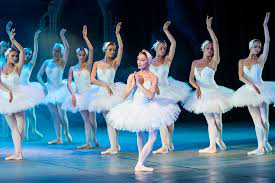 Northern Ballet recently announced a triple bill of works by late choreographer Kenneth MacMillan for this autumn, with further performances in spring next year. The programme will consist of MacMillan’s Las Hermanas, Gloria and Concerto, and will be performed in both Bradford and Leeds. This programme will mark the first time Northern Ballet has danced ballets by MacMillan, and additionally marks 25 years since the choreographer’s death, backstage at the Royal Opera House. Continue reading Northern Ballet announces MacMillan triple bill
Northern Ballet recently announced a triple bill of works by late choreographer Kenneth MacMillan for this autumn, with further performances in spring next year. The programme will consist of MacMillan’s Las Hermanas, Gloria and Concerto, and will be performed in both Bradford and Leeds. This programme will mark the first time Northern Ballet has danced ballets by MacMillan, and additionally marks 25 years since the choreographer’s death, backstage at the Royal Opera House. Continue reading Northern Ballet announces MacMillan triple bill
Category: Inspiration
HeadStart Newham project
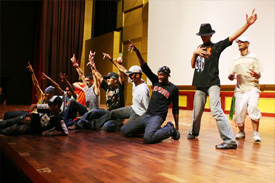 East London Dance is embarking on a major new partnership with HeadStart Newham, a project to tackle the growing prevalence of mental health problems amongst young people. From February 2017, East London Dance will embark on an 18 month project with HeadStart Newham – in partnership with London Youth and Sadler’s Wells – for mental health prevention in young people aged 10-16. The programme will deliver a creative and high quality programme of dance participation and performance, for young Newham residents with emerging mental health difficulties.
East London Dance is embarking on a major new partnership with HeadStart Newham, a project to tackle the growing prevalence of mental health problems amongst young people. From February 2017, East London Dance will embark on an 18 month project with HeadStart Newham – in partnership with London Youth and Sadler’s Wells – for mental health prevention in young people aged 10-16. The programme will deliver a creative and high quality programme of dance participation and performance, for young Newham residents with emerging mental health difficulties.
Through the participation programme, East London Dance aims to provide progression routes for all young people in East London, of any age or ability. The HeadStart project will identify and connect with this specific group of young people, providing them with a progressive dance journey. The dance programme is vital: Headstart Newham identified a significant and growing area of need among young people with this project, which will greatly benefit from shared knowledge, experience and the effect dance can have on mental health and wellbeing.
The programme will offer access dance classes at beginner, intermediate and advanced levels, weekly classes, week-long projects and the opportunity to join the East London Youth Dance Company. The programme will reach at least 150 local young people over the next 18 months, culminating in a dance platform event at Stratford Circus Arts Centre.
50% of all lifetime mental disorders begin by the age of 14, and evidence of the benefits of creative and sporting activities in promoting mental health resilience in 10-16 year olds who are at risk has been well proven. In light of this, HeadStart Newham’s commissioning of East London Dance to develop and lead a new preventative dance programme is hoped to promote wellbeing and mental health resilience for local young people.
Why Do You Dance?
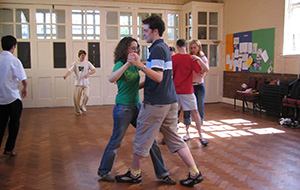 Dance is a universal concept, not limited to any one culture or age group. It can give so much to so many people, whether that is by partaking in the art form or by watching and enjoying from the sidelines.
Dance is a universal concept, not limited to any one culture or age group. It can give so much to so many people, whether that is by partaking in the art form or by watching and enjoying from the sidelines.
Dancing can take on many forms; it could be a once-a-week ballet class to work back to a childhood dream, it could be a ballroom class in order to meet new people, or a contemporary class to deposit some of that creative energy somewhere. And then it could be a monthly treat to visit the local theatre to see visiting productions or it could be teaching an older generation how to trust their bodies again.
Whatever your reason for enjoying dance, it is a very individual one. The reasons dance teachers train and teach their own classes is very different to a career in company management, and very different also to an aspiring performing artist starting to audition for jobs. Despite this dance can be the element that brings people together in a community, as it is how groups celebrate after wedding ceremonies and it makes so many people happy. On a scientific level the exercise of dance releases endorphins which positively affect the body, and equally watching dance can bring about this same feeling of contentment.
Why do you enjoy dance? The reasons can be wide-ranging. Dance and the performing arts can offer much release from everyday life, thy can offer friendship and fun. For some the hard work and graft of dance are the enjoyable means to an end in which they aspire to become a professional dancer yet for others it is a way to use the body and feel free for a few hours each week.
Professional Paths
 Despite a lifelong dream of performing on stage night after night, the hard reality for dancers is you may not fulfil this. This can be for a number of reasons, whether you are injured or are simply feel drawn to another lifestyle. After maintaining these dreams, and even a stint of performing, there are a number of potential options you may wish to pursue. Dancers are resourceful and disciplined, having gained a number of relevant and useful skills during training and performing.
Despite a lifelong dream of performing on stage night after night, the hard reality for dancers is you may not fulfil this. This can be for a number of reasons, whether you are injured or are simply feel drawn to another lifestyle. After maintaining these dreams, and even a stint of performing, there are a number of potential options you may wish to pursue. Dancers are resourceful and disciplined, having gained a number of relevant and useful skills during training and performing.
You may wish to become a choreographer or director, or even a casting director, having the last say in who performs what and when. Your dance knowledge is integral to your craft and the industry, so this is often a natural step for professional dancers. You may even want to step behind the scenes entirely, and become part of the wardrobe, stage management or part of the production crew for a theatre or company. Roles like lighting and set are also appealing to ex-performers, as they have an innate knowledge and sixth sense of the theatre; it is an equally artistic pursuit with creative fulfilment.
Remaining in the office might be more suitable to other professional dancers: management and administration are essential to dance companies and organisations through a number of roles, ensuring the companies make it into the stage and the audience make it into their seats. Other dance and arts institutions also need arts administration to ensure they run smoothly, from marketing and finance to programming, in organisations such as theatres, dance foundations and museums.
If you still yearn for physical pursuits, you may be more suited to roles such as a Pilates or yoga teacher – which complement dance training – or a massage therapist to help people to relax and restore their bodies. Alternatively you may become a fitness instructor or personal trainer, with some extra training. If you don’t want to give up the physicality of your career, fitness is an excellent alternative avenue, with dance based fitness classes rising in popularity. Simply teaching dance, however, is also just as fulfilling in passing your knowledge on to a future generation.
The Rambert Debate: Do Choreographers Needs Editors?
 The Guardian’s dance critic Judith Mackrell – following a Rambert performance late last year – asked if choreographers needed editors. Sometimes it is a common view, other times not so much, that dance work might benefit from an external eye cast over it to ensure it is succinct and comprehensive. This view may smart with some dance creators, however it seems necessary in order to create the best work possible for the future.
The Guardian’s dance critic Judith Mackrell – following a Rambert performance late last year – asked if choreographers needed editors. Sometimes it is a common view, other times not so much, that dance work might benefit from an external eye cast over it to ensure it is succinct and comprehensive. This view may smart with some dance creators, however it seems necessary in order to create the best work possible for the future.
Late January 2015 therefore saw Rambert host a discussion for an audience of dance professionals to explore the question in more detail. Judith chaired a panel which included Mark Baldwin and Paul Hoskins, Rambert’s Artistic Director and Music Director respectively, together with Peggy Olislaegers, the Director of Dutch Dance Festival. They were joined by three more directors: Robert Casarotto of Balleto di Roma, Christopher Hampson from Scottish Ballet and Sharon Watson from Phoenix Dance Theatre. Also taking part were two dance producers: Emma Gladstone from Dance Umbrella and Alistair Spalding of Sadler’s Wells.
Hampson’s response implied some brilliant artists would not accept editing of their work by someone else, in addition to the fact choreographers are constantly self-editing during creation. Spalding then warned of impeding artists that work ahead of popular or critical opinion; as Baldwin put it, it is like asking a choreographer to unscramble an egg in response to the impossibly difficult demands for change can be.
Despite this, Watson and Gladstone maintained that external circumstances can force change onto a work, and often there just may not be time to go through and see the piece critically. As identified by Casarotto, if this can be difficult for relatively well-resourced organisations, it is far harder for those working independently. Alternatively, Olislaegers felt that among younger practitioners, collaboration is more common and a choreographer’s autonomy less so.
The consensus seemed to advocate a supporting structure for creative processes, which could easily involve editors, producers, critical friends, organisations, networks: the list goes on.
Dance Relationship Resolutions
 Did you make any new year’s resolutions for 2015? Were any to do with dance, and have you managed to keep them? Some long term resolutions for the dance studio, however, may be easier to keep, as they can improve and maintain a good relationship with your teacher and fellow students.
Did you make any new year’s resolutions for 2015? Were any to do with dance, and have you managed to keep them? Some long term resolutions for the dance studio, however, may be easier to keep, as they can improve and maintain a good relationship with your teacher and fellow students.
Try not to moan too much in class – some teachers do not even allow talking! Letting everyone know you’re tired or hungry reinforces the feeling for everyone else in the class, including your teacher. Remember your teacher has probably taught several classes in a row, without any breaks, and they probably haven’t had time to eat for many hours – they are probably hungry and tired together! Try not to drag the energy of the class down therefore, to make the class as enjoyable as possible.
Make sure you are prepared for class by being fed and watered, so have a light snack beforehand if you need it. Try not to ask what time time is, or keep looking at the clock, as it implies you would rather be doing something else, somewhere else. Instead try to concentrate on enjoying what you are doing and working on your technique. Really think about how you are using your body and how to make the most of the time you have left in class.
Remember your dance teacher is there to help you learn and improve, and has your best dance interests at heart. If you are given a tricky combination or difficult barre exercise, think positively and ask for help if you are struggling – that’s what your teacher is there for! But also remember that being a dance teacher is a hard job that requires infinite passion and energy. Dance teachers are always on their feet and they are human too!
The Gifts Of Dance
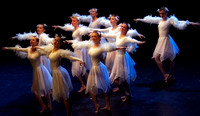 We are all aware of how good dance is for us. As a non-verbal method of communication utilising the body’s movements, often to music, there are many dance styles practised around the world. Originally these would have represented different ways of life, different cultures, ethnicities, belief systems, social structures, and traditions, but today it seems all dance styles are danced everywhere! It is arguable too that the individual and communal benefits of dance go far deeper than the common perception of dancing just for fun.
We are all aware of how good dance is for us. As a non-verbal method of communication utilising the body’s movements, often to music, there are many dance styles practised around the world. Originally these would have represented different ways of life, different cultures, ethnicities, belief systems, social structures, and traditions, but today it seems all dance styles are danced everywhere! It is arguable too that the individual and communal benefits of dance go far deeper than the common perception of dancing just for fun.
Alongside the beneficial physical expression of dance, the emotional, mental and physical health benefits of dance are too interrelated, and are key to personal development. Warming up, stretching and the actual physicality of dance aids our fitness and wellbeing, as well as releasing endorphins to boost our mood. Dance – as a cardiovascular activity – improves circulation, boosts memory and increases energy levels, as well as improving flexibility and toning that body.
Beyond advantages of dance for the body, dance also develops personal skills and character building for children at an early age, elements which then transfer to other areas of their lives later on. Dancing teaches discipline, consistency, perseverance and creativity, and encourages them to express themselves artistically. Dance is something which is very personal to each individual, and connecting with the self is something which can also come from dance.
Dance is for everyone, and everyone can benefit from the positives of dance. Age and social circumstances are trivial in terms of dance: even on a basic level it keeps us fit and happy, and also promotes engagement with others. It contributes to us physically while giving us another way to communicate what is on the inside, and express our feelings through bodily movements.
Dancing When Dance Cannot Come First
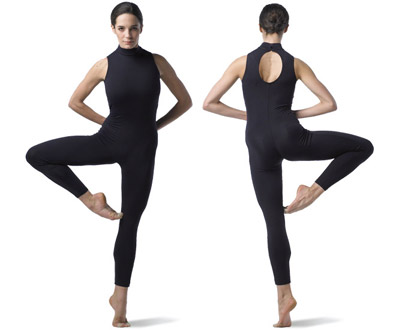 Despite it being the worst possible scenario for most dancers, sometimes dancing cannot come first in life. Whether this is because of personal, time-restrictive or financial circumstances or even public holidays, sometimes dance must be factored into a busy life, rather than the other way round.
Despite it being the worst possible scenario for most dancers, sometimes dancing cannot come first in life. Whether this is because of personal, time-restrictive or financial circumstances or even public holidays, sometimes dance must be factored into a busy life, rather than the other way round.
Make sure you use your time efficiently; don’t look back and see an opportunity for stretching time or a run round the garden. Use a calendar or diary which includes all your plans and objectives, and realistically work out when you have chance to take class or even just a ballet barre in your bedroom. Even better is a monthly planner which includes everything, even the plans of other members of your family. This will make it easier to see everyone’s schedules: everyone will be calmer if you know where to be when, and where you can expect to have free time to plan other activities.
Don’t forget to take a break too. Having a distraction from life – other than dance – can be hugely beneficial. Make sure you include some down time for yourself, such as reading, swimming, singing or even walking the dog! Knowing you have a certain time set aside for yourself can make dealing with everything that is going on a lot easier. Moreover, make sure you are realistic about what you can fit in to your schedule.
Remember that you won’t be overwhelmed forever, and that dance is something you love, so it will all be worth it! Don’t let stresses or worries get to you – enjoy the moment (if you can!) and it will make your return to dance even more rewarding.
Notes On Dance
 As a dance student, you may wonder how you will ever remember every note, correction and suggestion you are given in class. You may even have more than one teacher; even two teachers means double the amount of notes you are given! You may have teachers who work by the same method, however they may teach in very different styles. Whilst this is beneficial to ’round’ you as a dancer, it may be tricky to keep track of everything you have to remember.
As a dance student, you may wonder how you will ever remember every note, correction and suggestion you are given in class. You may even have more than one teacher; even two teachers means double the amount of notes you are given! You may have teachers who work by the same method, however they may teach in very different styles. Whilst this is beneficial to ’round’ you as a dancer, it may be tricky to keep track of everything you have to remember.
You may find it useful to keep note of everything that is said to you in class to make sure your technique and performance is as well rounded as possible. It can be hard to take everything on board, especially if you are given small corrections and subtle changes to your form. You may find you are constantly trying to please your teacher/s, but by writing things down it will help consolidate the information and process it for your body.
You don’t have to write your notes, thoughts and information down in any particular way, it is completely up to you as to how you’d like to format your notes, as long as they are useful in helping you progress as a training dance student. Looking back on your notes will also show you just how far you’ve come! Reflecting on what you have achieved will also serve as motivation for persevering in the future.
Corrections and imagery suggestions to aid your performance may form the bulk of your dance notes, so make sure you take a few minutes at the end of your dance classes to make any essential notes you may need – you may not remember them all until the next day! And if you’re learning something new, write that down too to prompt you when you’re practising outside of class.
Image courtesy of Wikimedia Commons.
Rhiannon Munson-Hobbs – Showgirl Stardom
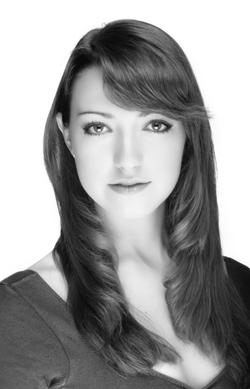 After graduating from London Studio Centre’s Intoto Dance Company, Rhiannon toured the UK with various dance groups and appeared in numerous TV and corporate events. She recently finished her first season as resident showgirl and cancan dancer at La Nouvelle Eve in Paris, and has been booked to work with other companies in Paris so will continue to perform there over the winter season.
After graduating from London Studio Centre’s Intoto Dance Company, Rhiannon toured the UK with various dance groups and appeared in numerous TV and corporate events. She recently finished her first season as resident showgirl and cancan dancer at La Nouvelle Eve in Paris, and has been booked to work with other companies in Paris so will continue to perform there over the winter season.
When did you begin dancing, where and why?
I started dance when I was six at an after school club where we learnt ballet and tap. To be honest, I only went because my best friends at the time went too. We eventually got put forward to do our exam, I loved getting shiny new satin shoes and having my hair done in a bun with a little ribbon. From then on, I was hooked.
How long have you been performing? Did you start young?
I performed in various events with my dance school whilst I was younger, but my first real experience was performing with The National Youth Ballet of Great Britain when I was 16. It was the first time I’d had to go through a real audition experience, and once the season started we had summer intensives at Elmhurst and Tring, which was a whole new world to me. We worked with brilliant choreographers such as Drew McOnie and Jo Meredith, and were lucky enough to dance at theatres such as Sadler’s Wells and the Birmingham Hippodrome. It sounds silly, but up until then I hadn’t really realised that dance could be a career, not just a hobby. The following year I successfully auditioned to be in One From The Heart’s production of Cinderella, and working with professional dancers and performers made me realise that I wanted to do this for a living.
Where did you train and what was a typical day like?
I trained at London Studio Centre where I studied all dance techniques; ballet, contemporary classes such as Limon, Graham and Cunningham, Matt Mattox jazz technique, hip hop, commercial, lyrical jazz, as well acting and singing. We also had lectures four times a week and at the end of my three years of vocational training I graduated with a BA (Hons) in Theatre Dance. A typical day started at 9am and finished around 5pm.
What is a typical day like now?
My day is now much more nocturnal! At La Nouvelle Eve [where I recently worked in Paris] we have two shows a night, six nights a week. We have to be in work to warm up and get ready by 6.30pm as the first show starts at 8pm, and the second is at 10pm. The show normally finishes around midnight, and once you’ve showered, prepped your costumes for the next day and taken your make up off it’s usually around 12.30am. To chill out after the show we’ll normally go for a drink somewhere local, or maybe go for a bite to eat. Getting to sleep in the early hours of the morning means that I don’t usually wake up until around midday the following day. Usually I meet up with friends, explore somewhere new in Paris, or go to one of our favourite cafes or shops – vintage shopping around Pigalle and Abesses is amazing, and there’s hundreds of little cafes or restaurants to check out.
Do you still take classes? How do you keep on top of your technique?
The show at La Nouvelle Eve keeps us very much in shape and it’s quite technical, but there are dance studios in Paris where you can go and train during the day as well – my favourite class to do at the moment is Yanis Marshall’s at Studio Harmonic, because it’s so so different to the style of dance we do in our cabaret show.
What’s the best part about performing in Paris?
The lifestyle is absolutely incredible in Paris, and I love that there are so many cabaret shows to discover and enjoy. There are so many things about my job that I love. Meeting and working with different people all the time is great. The fact that it allows me to travel is awesome too, I doubt I would have spent seven months living in Paris otherwise. Seeing progression and growth in kids you’ve taught over the years is also wonderful but nothing will beat the feeling of being on stage – when you’re waiting for the curtain to open, with your make up and costume on, your friends around you, with the lights on you, a packed audience waiting to see you dance. It’s an amazing feeling. I loved watching people’s reaction to the cancan at La Nouvelle Eve. I think a lot of people don’t know what to expect, seeing the shock and amazement on their faces reminds me just how lucky I am to be part of their Paris experience
What advice would you give to someone aspiring to be part of the dance industry?
Work hard and be a nice person. The dance world is so small that everyone knows everyone. If you’re the sort of person no one wants to share a dressing room with, after a while people just won’t work with you. Working hard goes without saying – you have to keep learning, keep improving, keep up your technique classes and also keep remembering why you decided to do this in the first place. There’s nothing more compelling to watch than someone on stage who is clearly enjoying themselves.
What’s next for you?
I want to stay in Paris for a while; I’ve completely fallen in love with cabaret, and with being a showgirl. I’ve booked a few more jobs out there to keep me busy over winter and I’ll be back working at La Nouvelle Eve and with another company next season.
